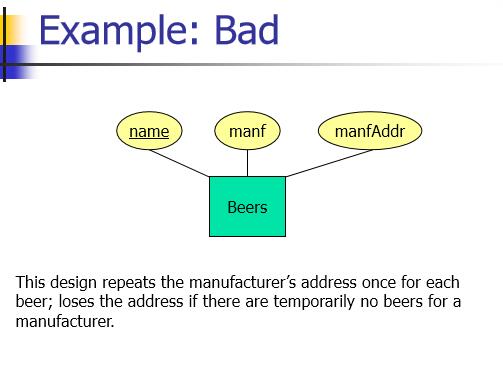数据库复习③
2016年6月15日
15:24
Main ER Model ER模型
1. ER模型中的约束constraints有哪些?
Single value constraints 单值约束
EX: a person can have only one father.
Referential integrity constraints 引用完整性约束
EX: if you work for a company, it must exist in the database
Domain constraints 域约束
EX: peoples’ ages are between 0 and 150.
2.ER图中的各种键Keys概念
super key 超键
A super key of an entity set is a set of one or more attributes whose values uniquely determine each entity
在关系中能唯一标识元组的属性集称为关系模式的超键
candidate key 候选键
A candidate key of an entity set is a minimal super key
不含有多余属性的超键称为候选键
举例:Customer_id is candidate key of customer
primary key 主键
Although several candidate keys may exist, one of the candidate keys is selected to be the primary key
用户选作元组标识的一个候选键程序主键
Foreign key 外键
完整性约束的一种,要求该属性在另一表的某个key中出现。
3.弱实体集Weak Entity Sets
From https://en.wikipedia.org/wiki/Weak_entity
In a relational database, a weak entity is an entity that cannot be uniquely identified by its attributes alone; therefore, it must use a foreign key in conjunction with its attributes to create a primary key. The foreign key is typically a primary key of an entity it is related to.
4.ER模型的原则
- 避免冗余Avoid redundancy
- 限制弱实体集的使用Limit the use of weak entity sets.
- 如果选为属性时是时不要使用实体集Don’t use an entity set when an attribute will do.
5.好的ER图举例:

6.差的ER图举例:


7.ER图举例:

数据库复习④摘要: 关系模型与ER模型、Database & Schema & Instance
ER图练习题链接:http://www.cnblogs.com/zpfbuaa/p/5256187.html
数据库知识点①~⑤链接:http://www.cnblogs.com/zpfbuaa/p/5358035.html